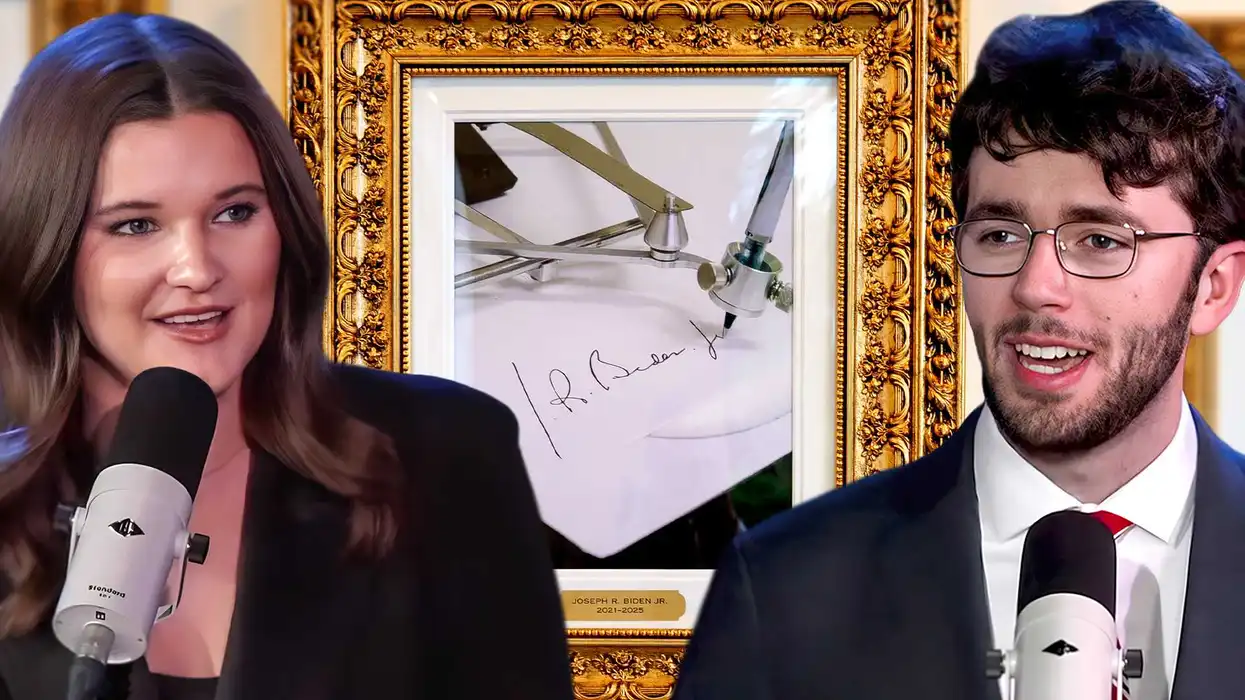
© 2026 Blaze Media LLC. All rights reserved.
Janitor Satellite' and 'Trash Collector': Ideas to Clean Up Space of Dangerous Junk
February 15, 2012
"...essential to be aware of the existence of this debris and the risks..."

A company that monitors the larger pieces of junk in space estimates that there are tens of thousands dead pieces of equipment floating around. As excited and worried as Earthlings all get when a bus-sized piece of equipment is set to fall to back Earth, to some, that's just one less piece cluttering space.
(Related: 3D film will shoot space junk into your face)
Txchnologist reports aerospace engineer Bill Ailor with Aerospace Corp., which tracks large space debris, as saying even smaller pieces hitting a spacecraft could render it dead given the speed with which they travel:
Because any spacecraft that came into contact with one of these objects would immediately become junk itself, NASA must schedule launches to avoid large pieces of orbiting trash.Then there are the random bits of debris not big enough to be tracked. These scraps — millions of them, by some estimates — move at 7-8 kilometers per second. “It’s like a bullet,” says Ailor. As with bullets, it’s their velocity that makes them dangerous. “I would say something on the order of a centimeter or larger could take out a space craft depending on where it hits,” he continues.

So what are we to do? Clean it up, naturally. There are several ideas being put into action to do so.
One such idea, according to Txchnologist, comes from Eugene Levin, who is senior scientist at STAR Technology and Research Inc. based in South Carolina. Levin's idea involves manipulating the electromagnetic fields to tether debris as a "trash collector" of sorts. The "Electrodynamic Debris Eliminator" (EDDE) would either bring the junk it collects back to Earth for reuse or would bring it down lower into Earth's orbit for a "controlled re-entry":
Much of the remaining technology has already been created and now needs to be tested in orbit. This year, the Naval Research Laboratory plans to deploy and test a kilometer long electrodynamic tether during its “TEPCE” experiment. They also ran a cost analysis on Levin’s EDDE concept and reported that it could remove 2,000 tons of debris from Low Earth Orbit in just over a decade for about $84 million.
Swiss scientists also announced plans Wednesday to launch a "janitor satellite" specially designed to get rid of space junk. The 10-million-franc ($11-million) satellite called CleanSpace One -- the prototype for a family of such satellites -- is being built by the Swiss Space Center at the Swiss Federal Institute for Technology in Lausanne, or EPFL.
Here's how CleanSpace One would work:
Launch of the satellite is expected within three to five years and its first tasks will be to grab two Swiss satellites that were launched in 2009 and 2010 but will be phased out of use, EPFL said. The U.S. space agency NASA says more than 500,000 pieces of spent rocket stages, broken satellites and other debris are orbiting Earth. Txchnologist points out that the floating junk is still technically private property, making who pays for what and how it is cleaned up a challenge.
Space junk has collided with satellites at least twice: In 1996, a French satellite was damaged by a rocket fragment, and in 2009, a satellite owned by U.S.-based Iridium Communications was destroyed in a collision with a derelict Russian satellite.
Watch this demonstration of the 2009 collision:
"It has become essential to be aware of the existence of this debris and the risks that are run by its proliferation," said Claude Nicollier, an astronaut and EPFL professor.
Building the satellite means developing new technology to address three big problems, scientists say.
The first hurdle has to do with trajectory: The satellite has to be able to adjust its path to match that of its target. EPFL said its labs are looking into a new ultra-compact motor that can do this.
Next, the satellite has to be able to grab hold of and stabilize the debris at high speeds. Scientists are studying how plants and animals grip things as a model for what would be used.
And, finally, CleanSpace One then has to be able to guide the debris, or unwanted satellites, back into Earth's atmosphere, where both the Swiss-made satellite and the floating garbage it collects would burn on re-entry.
The Swiss Space Center's director, Volker Gass, said it hopes to someday "offer and sell a whole family of ready-made systems, designed as sustainably as possible, that are able to de-orbit several different kinds of satellites."
It remains to be seen how cost-effective the satellites are since each one would be destroyed after its mission, but governments might provide some funding if governments agree to rules to limit debris.
In 2007, China purposely destroyed one of its own satellites with a missile in a test, putting an estimated 150,000 smaller pieces of debris into space and 3,000 big enough to be tracked by radar on the ground.
More recently, Russia's $170 million planned Mars moon probe got stranded in Earth's orbit after its Nov. 9 launch. Efforts by Russian and European Space Agency experts to bring it back to life failed. It was one of the heaviest and most toxic pieces of space junk ever to crash to Earth.
There have been no officially confirmed reports of anyone being hit by it on Earth, but the problem it poses has slowly gained traction in political circles in the decades since the space age began more than a half-century ago.
The European Union has proposed its own draft rules for operating in space and the United States views that document as a starting point.
U.S. Secretary of State Hillary Rodham Clinton warned last month of the space environment is threatened by space junk, and said the U.S. will hold talks with the EU to set informal rules aimed at limiting debris.
The Associated Press contributed to this report.
Want to leave a tip?
We answer to you. Help keep our content free of advertisers and big tech censorship by leaving a tip today.
Want to join the conversation?
Already a subscriber?
more stories
Sign up for the Blaze newsletter
By signing up, you agree to our Privacy Policy and Terms of Use, and agree to receive content that may sometimes include advertisements. You may opt out at any time.
Related Content
© 2026 Blaze Media LLC. All rights reserved.
Get the stories that matter most delivered directly to your inbox.
By signing up, you agree to our Privacy Policy and Terms of Use, and agree to receive content that may sometimes include advertisements. You may opt out at any time.






